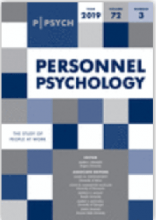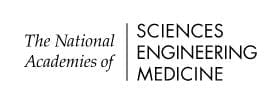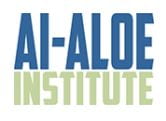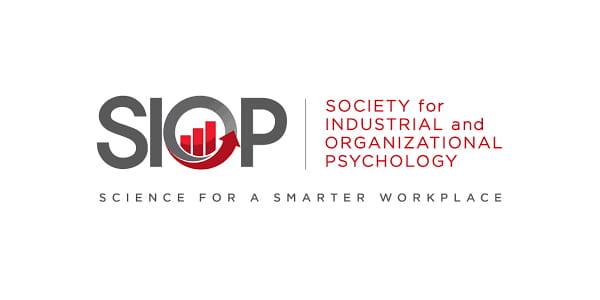For more information, please follow the link: https://www.nationalacademies.org/event/01-13-2022/human-ai-teaming-state-of-the-art-and-research-needs.
Author: vpham30
Georgia Tech headquarters NSF AI Institute for Adult Learning and Online Education (ALOE)
Researchers and experts from Georgia Tech, Arizona State University, Drexel University, Harvard University, Georgia State University, the University of North Carolina at Greensboro, and the Technical College System of Georgia form the new AI Institute for Adult Learning and Online Education funded by the NSF. According to the Georgia Research Alliance,” The ALOE Institute will develop new AI theories and techniques as well as new models of lifelong learning, and evaluate their effectiveness at Georgia Tech, Georgia State, multiple colleges within the Technical College System of Georgia (TCSG), as well as with corporate partners IBM, Boeing and Wiley.”
To learn more about ALOE, visit their homepage at aialoe.org.
Tara Behrend and Richard Landers join SIOP Executive Board


The Work Science Center would like to congratulate Tara Behrend and Richard Landers for their election to the SIOP Executive Board! Tara Behrend will be the new SIOP President-Elect, and Richard Landers will serve as Instructional and Educational Officer.
Personnel Psychology Call for Papers/Special Issue

Date: Monday, September 23, 2019
Personnel Psychology has a call for papers for their special issue, entitled “What’s Age got to do with it? Age and Age-Related Differences in the workplace.” Special Issue Editors are all Work Science Center members: Margaret Beier, Rice University; Ruth Kanfer, Georgia Institute of Technology; Dorien Kooij Tilburg University: Donald Truxillo, Kemmy Business School, University of Limerick.
Gender-Focused Studies of Preliminary STEM Program
By: Elizabeth Moraff
A notable opportunity emerged from our efforts to deconstruct research addressing the presence of women in STEM subjects and their ability to persist in these fields. Specifically, our examination focused on studies of women involved in STEM at higher education levels. Our review revealed consistent themes related to experienced gender bias, lack of institutional support and impacts of stereotype threat. The resulting effects are evident in the aggregate of attitude and behavior outcomes. They are also reflected heavily in the dispositional and situational antecedents. While college-educated women make up half of the entire U.S. workforce, they are less than 28% of the total STEM workforce (National Girls Collaborative, 2018). The importance of considering these systemic, structural and institutional factors related to the transition of girls and young women in STEM through primary and secondary schools is apparent.
A number of the studies acknowledged the importance of encouraging early interest and involvement. Developmental research on the education process suggests the back-end value of these endeavors is in individual successes and economic returns (Cannon, Karoly & Kilburn, 2005). The benefits of conducting more studies focused on the interactions between and among STEM educators and female students may expose interventions as necessary for later persistence in STEM studies and careers. Creating policies and other guided mandates affords support at more consequential points in time. In developing these early stage initiatives, there is potential for increased inclusion and influence.
The City of Atlanta provides an opportunity to explore this possibility further. Atlanta Public Schools (APS) adopted a new Charter System operating model as of June 2015. This transition enabled APS with more autonomy, more accountability for student achievement and limited state regulations/controls (APS Signature Programs, 2017). Within this operating model, each cluster of schools functions through the pedagogical lens of a particular signature program. The highlight here, rests in the fact that STEM is one of three signature programs chosen by the community and adopted under the APS Charter System Operating model. Parents, teachers and community members attributed their choice to the projected growth of STEM occupations, earnings of STEM workers versus non-STEM workers and greater achievement of STEM school scholars (APS Signature Programs, 2017).
Providing educators and institutions with keys to dismantle the multitude of disparities reflected in the low numbers of women in STEM careers is essential. Designing a study that assesses the achievements of schools/clusters participating in the STEM signature program, and measuring the achievement of students between schools/clusters in the other two signature programs, may do this. The prospective multi-tiered, mixed method study could establish a link that helps our nation create a more suitable educational foundation. This base can serve as the springboard from which young female scholars can be encouraged to engage, persist and thrive in STEM curiosities and ultimately, STEM occupations.
Career Paths in Stem for African American Women
By: Yendi Neil
Career paths in STEM (Science, Technology, Engineering, and Mathematics) are growing in the modern world, but women’s representation within these jobs is not experiencing the same amount of growth. A literature review was conducted on previous studies ranging from the early 2000s to now about women representation in STEM careers. After screening and content coding, 94 studies were deemed eligible. From these studies, common themes within the variables and methodology were determined. One prominent theme discovered in the methodology was the groups represented in the minority focus.
When looking at the methodology, the existing minority focus was coded, and a description was reported of the minority group(s). Overall, there were 28 studies that contained a minority focus with 16 about the African American community and 12 about the Asian American community. A lack of research on the differences between the minority groups (i.e. African Americans, Asians, Hispanics, and American Indians or Alaska Natives) was a common theme within these studies. More in-depth studies (i.e. interviews & case studies) focused more on African Americans while other studies gave a more generalized look by reporting the outliers in data or focusing more on surveys to understand minority groups. For example, a book source, Girls and Women in STEM: A Never Ending Story, contained studies conducting interviews and case studies on African American women, who were undergraduate and up (i.e. graduate students & employee), and the obstacles they face. In contrast, Developing the leadership capacity and leader efficacy of college women in science, technology, engineering, and math fields reported any outliers within the data as a representation of a minority focus of the study. The studies in Girls and Women in STEM: A Never Ending Story focused on the African American community because it is currently one of the largest growing populations in colleges but is still underrepresented. Significantly, there was a lack of attention given to racial subgroups in gender research during the mid-1990s. Researching into the experiences of African American women, researchers wanted to capture a snapshot of the struggles and successes faced and apply this snapshot towards other groups.
Furthermore, only two of the minority focus research papers contained some type of intervention that was tested: ADVANCE program and PTS (Noyce Pathway to Science). One study, African American Women in STEM Education: The Cycle of Microaggressions from P-12 Classrooms to Higher Education and Back, contained an African American minority focus and conducted interviews over the impact of PTS over the cycle of microaggressions from undergraduate to employment. The other study, Perceived Levels of Faculty Value, did not specify any one minority group and conducted a study about the climate/environment. Moreover, the current studies focused mostly on obstacles such as racial bias, cultural influences, workplace/college climate, and self-efficacy.
Heading into the future, studies can potentially place more emphasis on understanding what different obstacles are faced and the type of interventions that work for other minority groups with women in STEM. Each minority group faces different obstacles as racial stereotypes drive perception and affect the treatment of each race. A possibility in which each group reacts differently to certain variables and interventions exists and has not been tested thoroughly. Stereotypes can differ from outside and within many minority groups affecting women representation in STEM careers especially the field of study and career commitment.
In Their Own Voices: Workers with Concealable Disabilities
Work Science Center Network members Deborah Rupp and Lisa Finkelstein noticed a gap in the literature around workers with disabilities. While studies had oft examined outcomes of people with stigmatized identities, including those with disabilities, they did not find much research featuring the voices of workers with disabilities. To remedy this gap, and to dig deeper into the research on stigmatized identities, they conducted semi-structured interviews with twenty-eight workers who have a disability.
In particular, Finkelstein, Rupp, and their team wanted to hear about the experiences of workers with concealable disabilities. When hearing the word “disability,” many visible impairments, such as blindness, congenital disorders and such may spring to mind, but what about HIV? What about chronic back pain? The research team noted that these types of disabilities afford an individual the opportunity, the choice, to conceal them if they so desire. Prior research indicates that if a person can hide a stigmatized identity, it’s likely that they will do so. Ironically, the agency this choice provides does not correlate with higher well-being. The present study wanted to dig into the reasons that affect whether or not a person with a concealable disability would do so, and why. In fact, literature suggests that the deleterious effects on well-being may even intensify with a concealable identity.
In their interviews, they found two core factors that influenced stigmatized identity management and five themes that emerged from the interviews. Participants talked about how salient their concealable disabilities were as a major factor – or rather, how much they thought or were concerned about their disability. The second core factor was the anticipated stigma they would experience if they revealed their disability. Participants talked about worrying those others would view them as less competent, as seeking attention, and so forth. Even though the participants who had shared about their disability hadn’t necessarily experienced more discrimination, they communicated that the anticipated stigma had greater impact on their decisions of whether or not to diclose.
The researchers closed by suggesting numerous workplace and national policies that could help to protect workers who have concealable disabilities. Similarly, they urged further study on other factors that could impact people managing stigmatized identity. They presented intersectionality, or studying how people navigate multiple stigmatized identities simultaneously, of special interest.
Santuzzi, A.M., Keating, R. T., Martinez, J. J., Finkelstein, L. M., Rupp, D. E., & Strah, N. (2019). Identity Management Strategies for Workers with Concealable Disabilities: Antecedents and Consequences. Journal of Social Issues 0 (0), pp. 1-34. doi: 10.1111/josi.12320
Network Research Highlight: Assessment Center Differences – What’s the Cause?
Work Science Center Network member, Deborah Rupp, teamed up with other scientists to probe the causes of group-level differences in the way people were rated during the Assessment Center Method. The Assessment Center has been long viewed as an objective means of measuring performance. It involves standardized evaluation of behavior based on job-related simulations, interviews, and psychological tests. The job simulations measure candidates’ critical competencies for jobs.
In an age where we recognize internalized bias’ pernicious effects, the Assessment Center has long been considered immune. Some research has recently questioned this assertion, noting that demographic differences can impact ratings. Rupp and her team wanted to know why. In the present study, they examined how the assessors’ own demographic characteristics affected the ratings they gave. In particularly, they looked for leniency bias and similar-to-me bias, assuming that assessors would rate people of their same race more favorably, and that men would rate women more favorably overall.
Surprisingly, they found virtually no individual-level effects, and the group-level impact they found was quite small. In sum, based on their sample of professionals from a large metropolitan police department, the Assessment Center method seemed to work. They did not find systematic differences in the way assessors rated candidates based on their own characteristics.
Rupp and the team wondered why. In their considerations for future directions and limitations of their research, they suggest that their study paired assessors and assessees who didn’t know each other. This mutual novelty excluded personal history, knowledge of personality or values, and perhaps enabled greater objectivity. Similarly, in the study setting, the assessors received extensive training and resources to perform the Assessment Center. The researchers verified the process’ integrity from start to finish. Does the same caliber of Assessment Center exist universally? Certainly not! They implore organizations using the Assessment Center Method to safeguard the instrument to preserve its predictive power and overall fairness. But that’s just a hunch. In order to really find out what’s causing group-level discrepancies, scientists need to conduct more studies to examine what’s going on.
Thornton, G.C., Rupp, D.E., Gibbons, A.M., Vanhove, A.J. (2019). Same-gender and same-race bias in assessment center ratings: A rating error approach to understanding subgroup differences. International Journal of Selection and Assessment 27: 54-71. doi: 10.1111/ijsa.12229
Network Research Highlight: Measuring Hospitality
Work Science Center Network Member, Kostadin Kushlev, and a team of co-researchers noticed something strange in psychological literature: where were the studies on hospitality? As they combed through indices of flourishing, instruments for well-being, they found staggeringly little attention paid to this universal and cross-cutting phenomenon. Despite the fact that all people across time, every culture, and every demographic has practiced hospitality, only scraps of research emerged. Even more, they found few tools to investigate hospitality.
Responding to this chasm, they created a working definition of hospitality, and they created the Brief Hospitality Scale (BHS), a measure of hospitality. Hospitality, they reason in their paper, consists of two key elements. The first is the act of a host receiving a guest into their own territory. The territory could be an office, a home, or other location — the factor distinguishing it is that the host has ownership and sway over the place, but the guest does not. Secondly, they noted that hospitality involves welcome. The social and emotional goal of hospitality is to foster relaxation and positivity while the two members interact. It’s intimate, in that both parties see and know each other.
Once they outlined the parameters of hospitality, they set to work finding a way to analyze it. The research team collected a group of sixty-eight potential items to tap into hospitality, whittling the list down to a final twenty-three. The measure accounted for the way hospitality impacts people’s senses of self, affect, self-esteem, and their perception of how much effort it takes to demonstrate hospitality. In an initial study, they validated the measure on a group of Americans, and assessed the overall well-being in relation to hospitality. They also scrutinized this group of American’s attitudes about hospitality. Overall, respondents valued hospitality and saw it positively. People who scored higher on the BHS also tended to show more hospitable behaviors.
After this initial study, the researchers extended the measure to other nations to see what the scale would capture. They noticed that each of the eleven nations they surveyed had similar views to the Americans; they held hospitality in a positive light. However, they noticed that respondents from the Middle East and Latin America said it was significantly more important than other nations like Australia and Singapore. These attitudes correlated with the actual hospitable behavior the nations demonstrated.
Perhaps most notably, the researchers found that hospitality consistently predicted all forms of well-being. While this study couldn’t conclude the nature of that association, they urge psychologists to conduct further study on it. Finally, those psychologists have a tool with which to do so.
Biswas-Diener, R., Kushlev, K., Su, R., Goodman, F., Kashdan, T., & Diener, E. (2019). Assessing and understanding hospitality: The Brief Hospitality Scale. International Journal of Wellbeing, 9 (2), 14-26. doi: 10.5502/ijw.v9i2.839
Network Research Highlight: Batch Your Smartphone Notifications
By: Keaton Fletcher
Work Science Center Network member, Kostadin Kushlev, recently set out to find the answer with other researchers. In his recent publication, Kushlev and the other researchers conducted a field test to see how changing the intervals of smartphone notifications would affect worker productivity and well being. To do so, they recruited two hundred participants who had smartphones. Each participant downloaded a customized app that would control how often the phone would give notifications. At first, all of the participants received notifications as normal. After two weeks, the app placed the participants into one of the four groups. The control group continued to receive notifications as normal. The two “batch” groups, started to receive their notifications at timed intervals. One of the batch groups heard their phone ping every hour, while the other group received notifications three times throughout the day. A last group didn’t receive any notifications from their phones at all.
Ever been working only to hear an enticing little “ping!” accompanied by a bright light? If so, you’re likely one of the 90% of people ages 18-49 who own a phone. Psychologists and organizations alike have wondered how these ever-present interruptions affect workers.
As the phones were delivering notifications, participants reported on their anxiety, their stress levels, their feelings of being distracted, how productive they were, and their fear of missing out. Every day, participants completed this survey. The researchers imagined that those whose phones were going off regularly but not randomly would feel more productive and less stressed.
They were sort of right. Participants who got notifications three times a day felt more control over their phone, concentration, and overall well-being. They felt less stressed, but did feel more worried about missing out than the control group. In an interesting twist, the group that received no notifications at all suffered the most. They felt more anxious, unlocked their phones more, and were more inattentive overall.
What does this mean for the average worker or manager? Regular breaks are good. It may be helpful to encourage employees to silence their phones and instead take regular breaks to check on what’s going on. Personally, workers can carve out phone-less times to get into a flow with the comfort that they’ll get a notification before they miss out on anything too exciting.
Fitz, N., Kushlev, K., Jagannathan, R., Lewis, T., Paliwal, D., Ariely, D. (2019). Batching
smartphone notifications can improve well-being. Computers in Human Behavior 101 pp.
89-94. https://doi.org/10.1016/j.chb.2019.07.016.









